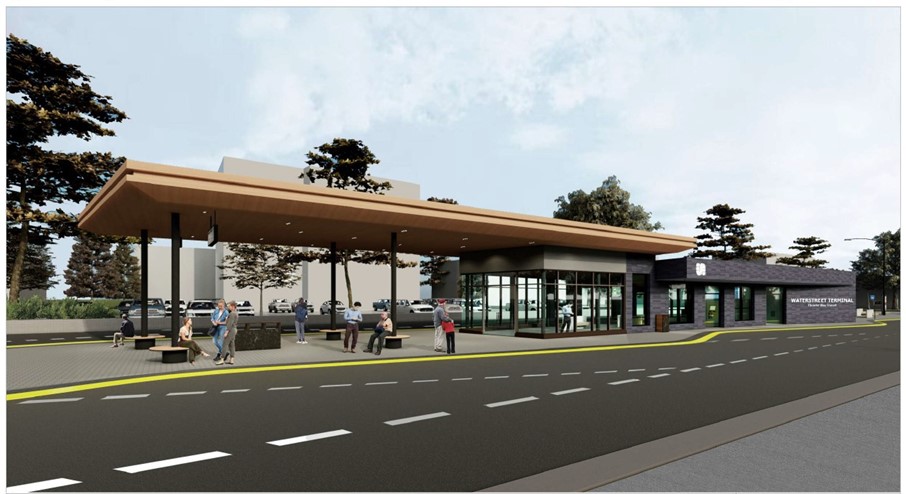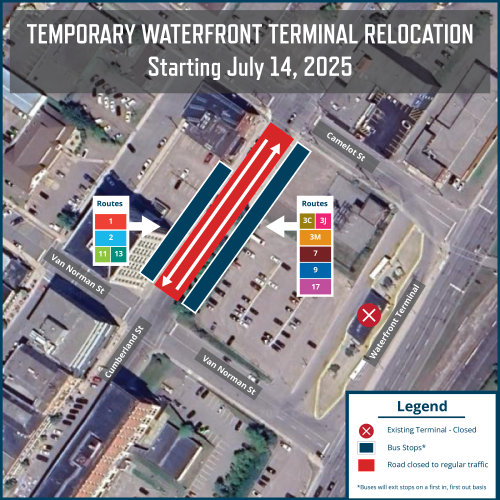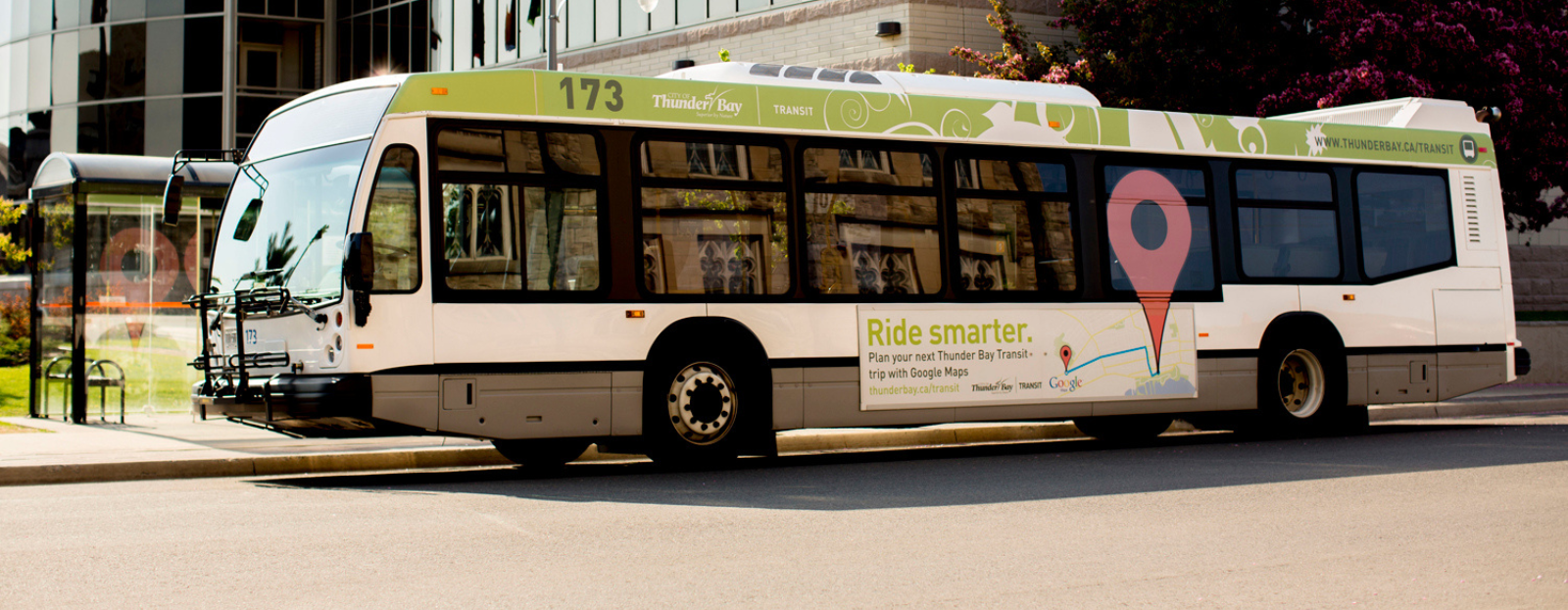Thunder Bay Transit is undertaking many projects to become the travel option of choice for residents and visitors through the provision of safe, reliable, affordable and convenient service while significantly reducing greenhouse gas emissions. These transformative improvements will be realized through a phased, multi-year approach with investments from all levels of government (municipal, provincial, and federal).
Waterfront Terminal Improvements
 Thunder Bay Transit will be renewing and enhancing the Waterfront Terminal to improve safety, accessibility and convenience for passengers and operators alike. Specific improvements include:
Thunder Bay Transit will be renewing and enhancing the Waterfront Terminal to improve safety, accessibility and convenience for passengers and operators alike. Specific improvements include:
- An expanded and indoor waiting area with greater visual connection between interior and exterior, improving the passenger’s sense of safety and security
- Increased interior and exterior seating for passengers
- Retrofit of the existing building to be consistent with Thunder Bay’s Net Zero Strategy
- New accessible entrance doors
- Improved signage and wayfinding, incorporating electronic route and schedule maps
- Crosswalk for safe pedestrian access
- Improved operator rest areas.
See the Temporary Bus Shelter Renderings
See the Waterfront Bus Transit Terminal Renderings
This project is funded through the Infrastructure Canada Improvement Program – Public Transit Stream.
Construction began July 14, 2025, and is expected to continue through early winter 2025. During the construction, all Waterfront Terminal operations are temporarily being relocated just west to Cumberland Street North and the Whalen Building. Cumberland Street North will be closed to vehicle access, with the exception of public transit buses, between Van Norman Street and Camelot Street.
| Locations of Buses During Construction |
 |
On-Demand Transit
Thunder Bay Transit will be introducing On-Demand Transit in multiple phases commencing 2026–2028. On-Demand Transit is a transit service with no fixed route or schedule. Instead, passengers will book a trip through an app, online or by phone, and then the bus travel is optimized through a computer-based system. On-Demand operates within a specific zone allowing riders to travel from bus stop to bus stop within the zone or to a hub to connect to conventional transit.
Stay tuned for more information on public engagement opportunities to provide your feedback on proposed On-Demand Transit.
Contact Us








